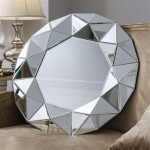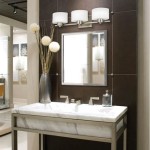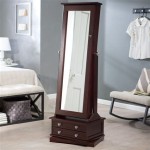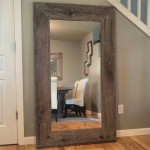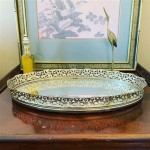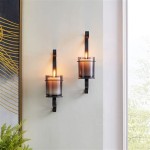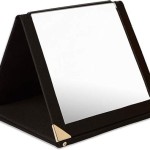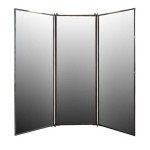Antique Victorian Mantle Mirrors: A Reflection of History and Elegance
Antique Victorian mantle mirrors represent more than just reflective surfaces; they serve as captivating glimpses into a bygone era. These ornate pieces, crafted during the reign of Queen Victoria (1837-1901), embody the era's distinct aesthetic sensibilities, reflecting its fascination with intricate detail, opulent materials, and a romantic view of the past. Today, these mirrors remain highly sought after by collectors and interior decorators alike, prized for their historical significance, artistic merit, and ability to add a touch of grandeur to any space.
The Defining Characteristics of Victorian Mantle Mirrors
Victorian-era mantle mirrors are easily distinguished by their characteristic features. Often large and imposing, they were designed to be the focal point of the Victorian parlor or drawing-room. The frames, typically constructed from wood, were frequently embellished with intricate carvings depicting popular motifs of the time, such as flowers, foliage, scrolls, and classical figures. Gilding, ebonizing, and the use of dark, richly-toned woods like mahogany and walnut were common, contributing to the overall sense of opulence. While rectangular shapes were prevalent, oval and arched tops were also popular choices, lending a softer, more romantic aesthetic.
The mirror plates themselves often featured beveled edges, a technique that involves angling the edges of the glass to create a decorative prism effect. This not only enhanced the mirror's reflective qualities but also contributed to the overall sense of depth and dimension. Some mirrors even incorporated etched designs or etched frosted sections within the glass itself, further elevating their artistic merit.
Beyond their decorative function, Victorian mantle mirrors also served a practical purpose. Placed above the fireplace mantel, they helped to reflect and amplify the light from the fire, illuminating the room and creating a warm, inviting atmosphere. This was particularly important in the days before electricity, when fireplaces served as the primary source of light and heat.
The Influence of Design Movements on Victorian Mantle Mirrors
The Victorian era witnessed a resurgence of interest in historical styles, leading to a fusion of various design influences in mantle mirror construction. The Gothic Revival movement, with its emphasis on pointed arches, intricate tracery, and medieval motifs, significantly impacted the design of some Victorian mirrors. Others embraced the Rococo Revival, drawing inspiration from the 18th-century French style with its asymmetrical designs, shell motifs, and playful ornamentation.
The Aesthetic Movement, which championed "art for art's sake," also left its mark on Victorian mantle mirrors. These mirrors often featured simpler, more streamlined designs, emphasizing the beauty of natural forms and materials like flowers, birds, and flowing lines. The influence of Japanese art and design, particularly evident in the use of asymmetrical compositions and stylized floral motifs, can also be seen in some Victorian-era mirrors.
Caring for and Valuing Antique Victorian Mantle Mirrors
Preserving the beauty and integrity of antique Victorian mantle mirrors requires careful handling and maintenance. Dusting should be done regularly with a soft, dry cloth. Avoid using abrasive cleaners or harsh chemicals, which can damage the delicate finish. If the mirror has gilding, extra care should be taken to avoid rubbing or scratching the gilded surface.
When assessing the value of an antique Victorian mantle mirror, several factors come into play. The mirror's age, condition, and rarity are crucial considerations. Mirrors with original, undamaged silvering are particularly valuable, as resilvering can diminish a mirror's historical authenticity. The quality of the craftsmanship, the intricacy of the carvings, and the materials used in its construction also contribute to its overall value.
The presence of a maker's mark can significantly enhance a mirror's value, providing valuable information about its provenance and authenticity. Well-known Victorian furniture makers, such as Gillows of Lancaster and Holland & Sons, often marked their pieces, allowing collectors to trace their history and verify their origins. Provenance, or the documented history of ownership, can also add to a mirror’s value, further attesting to its authenticity and historical significance.
Properly cared for and appreciated, antique Victorian mantle mirrors can serve as beautiful and historically significant additions to any home, offering a tangible connection to the elegance and craftsmanship of a bygone era.

Large Victorian Gilt Ovemantle Mirror By Harbour Antiques Devon Specialising In Antique Mirrors And Furniture

Antique Victorian Mantle Mirror Wells Reclamation

A Large Late Victorian Gilt Pine And Composition Overmantel Mirror Lassco England S Prime Resource For Architectural Antiques Salvage Curiosities

340 Antique Overmantle Mirrors For Ingantiques Co
Victorian Guilt Over Mantle Mirror

Antique Victorian Large Mahogany Mantle Wall Overmantle Mirror 897545 Ingantiques Co

Victorian Mantle Mirror In Gilt Roccoco Carved Frame For At Pamono

Large Antique Victorian Gilt Overmantle Mirror Kernow Furniture

Oval Victorian Overmantle Mirror With Cherub Antique Mirrors At Straffan Antiques

3 Features To Look For In Gilt Mantle Mirrors

